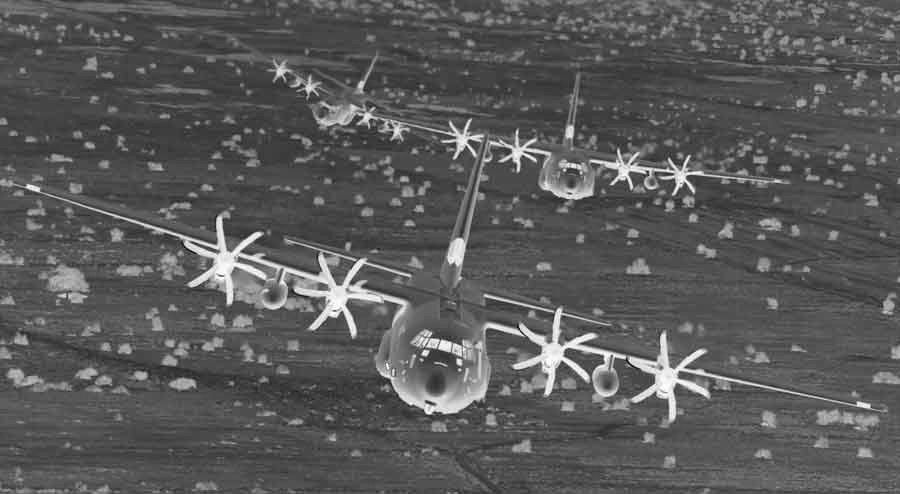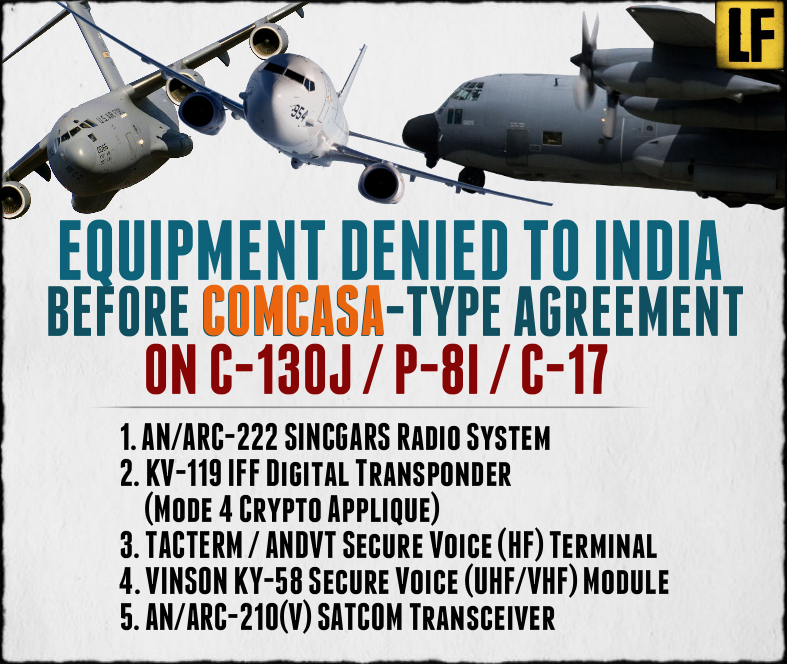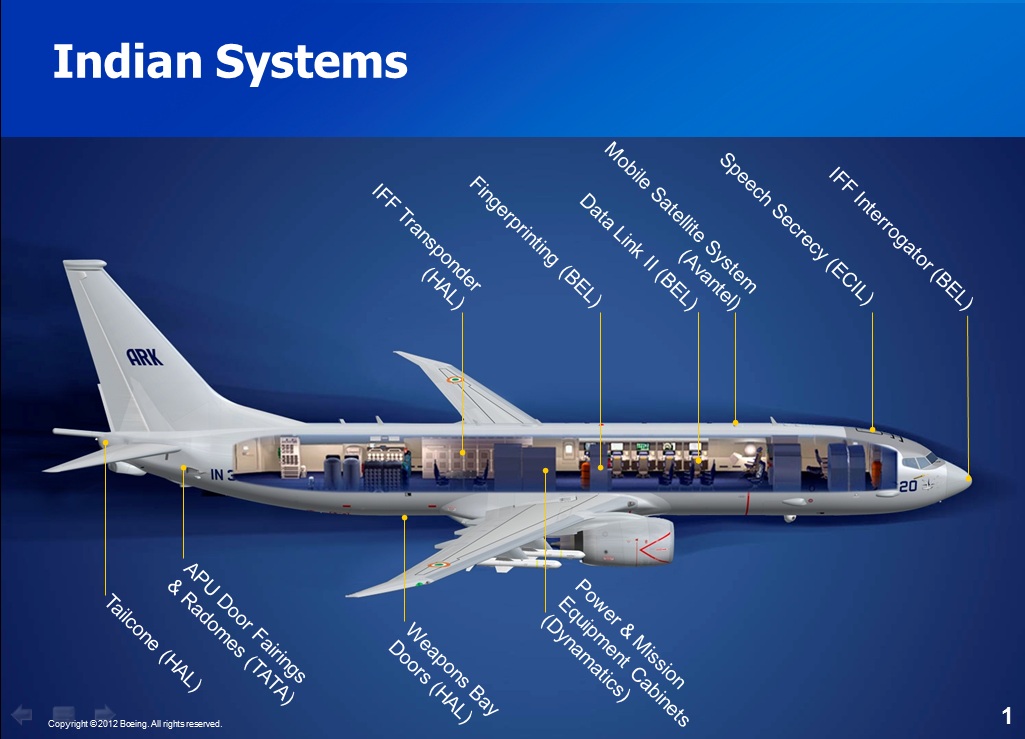
After years of twists, turns, name changes and modality tweaks, India and the United States today signed a landmark agreement that lays down the framework for sensitive information sharing and the administration of highly controlled US-built encrypted communications equipment. The Communications Compatibility and Security Agreement (COMCASA) was signed today as part of the 2+2 dialogue in New Delhi, the first of its kind interaction between the US Secretaries of State and Defense and their Indian counterparts, the ministers for External Affairs and Defence.
The agreement goes into effect immediately for 10 year period.
Earlier referred to as CISMOA (Communications Interoperability and Security Memorandum of Agreement), the COMCASA’s overarching strictures have in the past forced Washington to hold back several bits of key communications equipment from military platforms sold by the United States government to India. While the absence of an agreement has meant at least some sensitive kit being dropped from final configurations, these were most prominent in the three large military aircraft purchases that India has made in the last decade: Lockheed Martin C-130J Super Hercules special mission transports, Boeing P-8I long range maritime reconnaissance and anti-submarine jets and C-17 Globemaster III heavy transport aircraft.
Here’s a list of the prominent pieces of equipment denied to India in the past in the absence of a COMCASA-style agreement — equipment that now theoretically becomes available to the Indian government for current and future platforms:

All five of the above listed systems are controlled directly by the U.S. government, with exports only permitted as part of foreign military sales and with attendant communications security agreements like COMCASA. The SINCGARS, for instance, is a combat net radio deployed by the US military for encrypted voice and data communications. The KV-119 is a highly evolved Identify Friend/Foe transponder. The ANDVT is a secure voice terminal for low bandwidth secure voice communications in use throughout the US military. The VINSON KY-58 is a secure voice module that involves encrypted communication to and from military aircraft and other vehicles. The AN/ARC-210 is a family of radios for military aircraft that provides two-way voice and data communications across modes.
The Indian military has navigated the firewalls of CISMOA/COMCASA during procurements in the past by plugging in Indian-built equipment to perform encrypted communications and other functions. For instance, the Indian Navy’s P-8Is feature a whole host of equipment developed both by public and private sector firms to make up for equipment denied by the US government at the time:

The signing of the COMCASA today is landmark in many ways. Indian governments have so far been sensitive about entering into agreements that have implications on sensitive information sharing and the prospect of electronic US control on equipment sold to India, especially in times of conflict. While the US has attempted progressively to assuage concerns about control of such equipment and the protection of data gathered by India’s prospective use of such equipment in the future, India has inched towards being on the same page. It is little known that the Indian Navy’s US-built P-8Is played a key role in keeping tabs on the major India-China military stand-off in the Doklam region of Bhutan last year. But it took Washington’s sharing of intelligence of Chinese troop movements during the stand-off that proved to close the deal as far as India’s reservations on COMCASA were concerned.
The signing of the agreement throws open the possibility of India tapping into US intelligence on other Chinese movements, most notably PLA-Navy submarines in the Indian Ocean region. While the Indian Navy P-8I fleet has made headway in keeping tabs on movements, deeper sensor data will allow the kind of efficacy the Indian government keenly needs, and soon.

Speaking today after the 2+2 dialogue, Indian defence minister Nirmala Sitharaman said, “We are also putting in place an enabling framework for closer cooperation between our defence forces. The signing of the Logistics Exchange Memorandum of Agreement (LEMOA) in 2016 and the Helicopter Operations from Ships Other Than Aircraft Carriers (HOSTAC) earlier this year were important steps in this direction. The signing of the Communications Compatibility and Security Agreement (COMCASA) today will enable India to access advanced technologies from the US and enhance India’s defence preparedness.”
Of the three foundational agreements for security cooperation, India and the United States now have LEMOA and COMCASA in the big. There has been now forward movement for years, though, on the third — the Basic Exchange and Cooperation Agreement (BECA) for Geo-spatial Cooperation.

Shiv but does any of these technologies are game changer for india because india has already substituted them with alternatives from other sources.